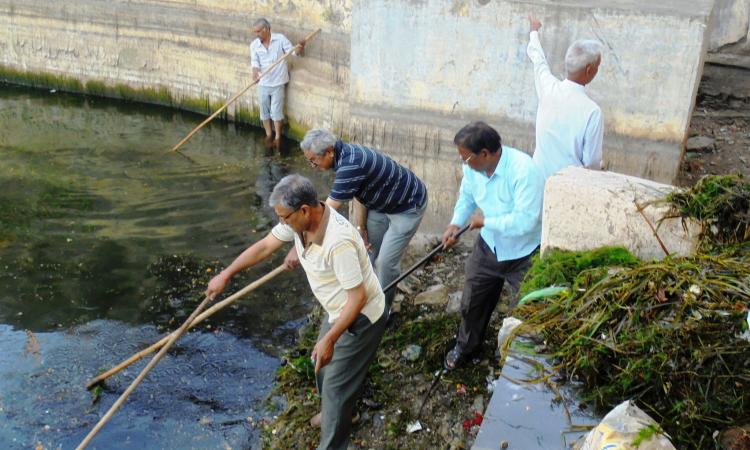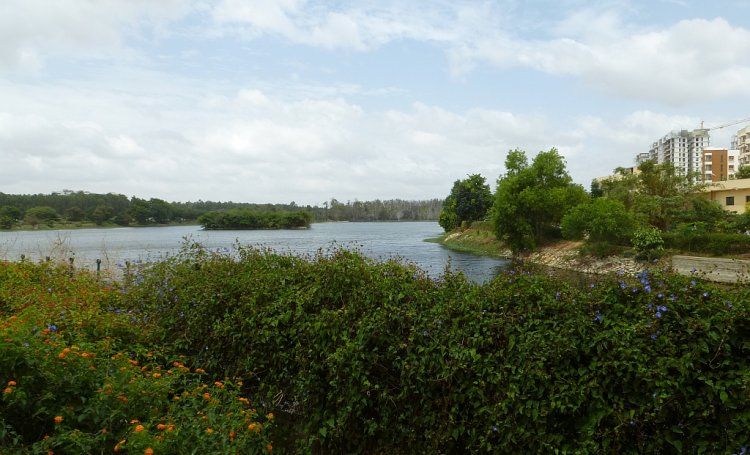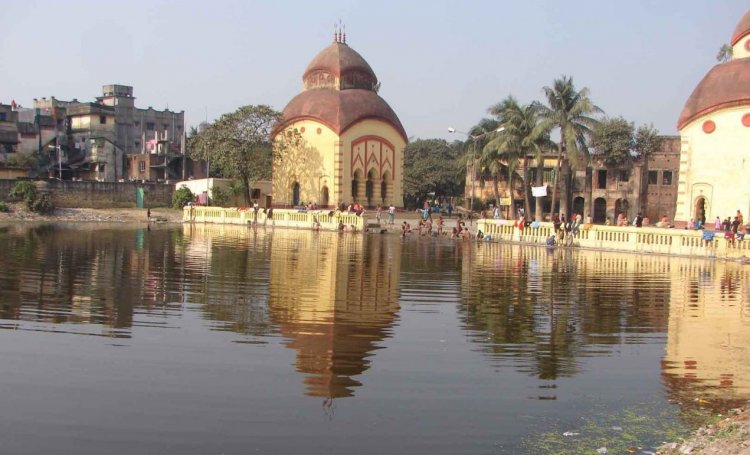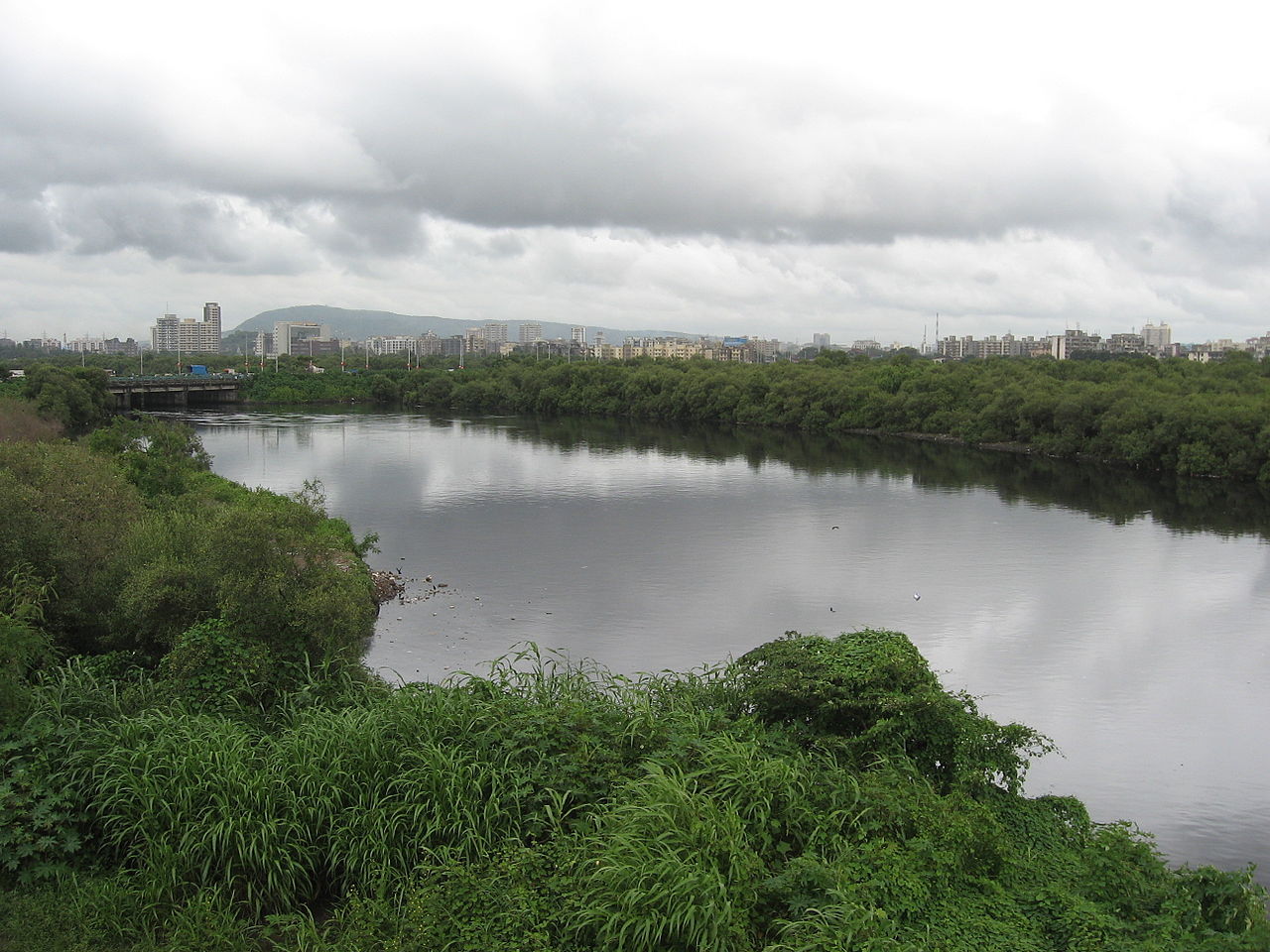
The pitiful state of some of the water bodies in the country, coupled with the sheer apathy of the government, have forced some well-meaning citizens to come out of their comfort zones and make a difference. Some of these efforts, like the Puttenahalli lake in Bengaluru that is now overflowing with clean water, have been successful, while others are ongoing. Here, we feature some stories of a few Good Samaritans and their efforts to restore the lakes and rivers of their cities.
Udaipur lakes
Flanked by several artificial lakes, Udaipur gets its moniker, the city of lakes, for a reason. The lakes, however, are not in the best shape now. “The lakes of Udaipur have been reduced to being a garbage can by the houses around them and the numerous hotels catering to the tourism industry,” says Tej Shankar Paliwal, president of Chandpol Nagrik Samiti, a citizens’ group working on lake restoration. Paliwal has been leading the efforts of the citizens to desilt, clean and restore some of the lakes to improve their water quality.
“The Fateh Sagar lake, constructed in the late 1600s by ruler Maharana Jai Singh, is now the second major source of drinking water in the city. The lake is highly polluted and its storage capacity is getting reduced,” Paliwal notes. “The lake poses a risk to public health, now that urbanisation has degraded its water quality,” says Nand Kishore Sharma, secretary of a local environmental conservation organisation, Mohan Singh Mehta Memorial Trust. He says that citizens come together almost every weekend to put in voluntary labour for cleaning the lakes, removing water hyacinth and sorting out junk.
Some of the more recent efforts of the government, like removing water hyacinth through bio-control and introducing new varieties of fish are not finding favour with these lake-restoration groups. Notable is the government’s attempt to restore the Fateh Sagar lake under the Ministry of Environment & Forest’s (MoE&F) National Lake Conservation Plan. As a part of this, the lake area was to be desilted, sewage treatment plant installed and the area adjacent to the lake beautified. “Many of these plans are too expensive and fail in the absence of a proper institutional mechanism,” says Paliwal.
Dr Tej Rajdan of Jheel Sanrakshan Samiti, another lake conservation group has been pressuring the government agencies since 1992 (when the organisation was formed) to work on lake restoration and resist lake encroachment. The organisation is open to anyone who wants to join. “Jheel Sanrakshan Samiti has, through these years, sought intervention of the Rajasthan high court through Public Interest Litigations to restore the lakes and appeal against encroachments on the lake,” says Rajdan.
The group has, from time to time, received positive support from the court when it hauled up officials on the lacunae and asked the government to prepare a time-bound plan to clean up Udaipur’s lakes. Yet, the lakes Pichhola, Swaroop Sagar, Fateh Sagar and Badi, which are the city’s lifelines, have deteriorated in quality over the years. “A lake development authority too has been constituted in 1999 focusing on the problem of the lake, yet the indifference continues,” says Sharma. “It is in this backdrop that the citizens of Udaipur have been trying to revive these lakes,” says Haji Sardar Muhammad of Jheel Hiteshi Nagrik Manch, a social group dedicated to keeping the lakes clean.
The lakes of Bengaluru

In Bengaluru, a city known for its lakes and gardens, a group of residents of L&T South City, an apartment complex that overlooks the Puttenahalli lake, realised that the lake next door was turning into a dumpyard. They got together and did a signature campaign to put pressure on the Bruhat Bengaluru Mahanagara Palike (BBMP) to save the lake. Finally in 2010, the BBMP started the restoration of the lake,” says Arathi Manay, managing trustee of Puttenahalli Neighbourhood Lake Improvement Trust (PNLIT).
“While the lake restoration was in progress, we approached the BBMP to do a tree-planting drive. Then we hired a gardener and sweeper to maintain the place. To keep a vigil, we also appointed security guards. We collected donations from the neighbourhood to meet the expenses. In the meantime we applied for income tax exemption so that the donors could also benefit,” says Manay.
The citizens group kept a watch on what the BBMP contractors were doing and gave suggestions, many of which the BBMP incorporated in the plan for the lake. “As water started filling the lake, birds started coming. To get the neighbourhood involved, we started organising bird-watching sessions, gardening and other activities where volunteers could help out. We created PNLIT merchandise and used public gatherings like school fairs, festivals, etc to promote the cause. We had a rainwater harvesting system set up, which harvests the water that falls on the buildings, and serves as a live model for visitors. Subsequently, we have managed to get water from the streets diverted to the lake, and get a sewage treatment plant fixed. We are constantly on the lookout for things that will help us maintain the lake better, and regularly put in improvements or additions,” says Manay.
In a similar lake-protection effort, the residents of Sarjapur got together to protect the Kaikondrahalli lake, a 48-acre water reservoir in Bellandur area of Bengaluru. The group has more recently been active in its attempts to save the sensitive valley zone between two lakes--Kaikondrahalli and Kasavanahalli--from getting destroyed from unabated development. Recently, they started an online petition to bring the attention to the immediate threat from buffer zone violations on the lakes’ boundaries. Priya Ramasubban, who has been leading the citizen’s campaign had told India Water Portal in an earlier interview how the BBMP’s zonal office and the Karnataka Pollution Control Board have been turning a blind eye to these rampant violations, despite local complaints. “The area has no BWSSB/Cauvery water supply and the residents are dependent on tanker water,” she adds.
The city’s newly formed Karnataka Lake Conservation and Development Authority (KLCDA) has started enrolling wardens for its Lake Watch Committees, a welcome move for many activists. A key challenge that the Puttenahalli lake protection group faces is getting people for conservation work. “We have many volunteers who are fine to help on the weekends but getting people to help regularly with responsibility on a pro-bono basis is difficult,” says Manay. “Urban lifestyles including long commutes and longer work days makes it difficult to get people together on a sustainable basis. It's often the same set of people who end up doing a variety of activities. Unless there is a greater understanding of urban commons and a move towards preserving them, lakes and other common spaces stand no chance as cities expand,” says Rekha Raghunathan of Indian Institute of Human Settlements, Bengaluru, who is involved in this work.
Kolkata’s water bodies

Kolkata, which had around 8,700 water bodies about two and a half decades ago has lost 44 percent of it in the last two decades, says Mohit Ray of Vasundhara, a group working on environmental and human rights issues, in an interview to India Water Portal. Ray points to the fact that the Kolkata Municipal Corporation (KMC) has remained reluctant to bring out a proper list of disappearing water bodies. As a result, Vasundhara had to put in painstaking efforts to trace out the history of the disappearing ponds and make a list based on Google’s satellite image.
Vasundhara has been working with a number of local community movements to save the water bodies, and has pressured KMC to take some action but it has not always worked. “One part of the Bikramgarh Jheel was filled up by a multistoreyed residential-cum-commercial complex known as South City. There was local protest, we went for legal action but all that failed due to strong alliance between the real estate group, local politicians and the government,” says Ray.
“A large number of people, mainly migrant labourers and the poor, use these surface water sources for many things like bathing and cleaning. In many cases, the banks of these water sources are the only lung spaces in a city with the aquatic, avifauna and terrestrial lives sustaining around them and serving as the receptors for rainwater harvesting, maintaining local groundwater levels, etc,” says Ray.
KMC neither has any department nor has the budget to create mechanisms to look after these water bodies. It takes up unplanned activities like renovation and beautification works occasionally after public pressure. “There are significant lessons that can be drawn from our experiences to engage with urban communities in taking care of the water quality, environment and aesthetics of these ponds. Until now, only the local community groups manage these water bodies without help from the administration. Sometimes financial help is obtained from the municipality as a one-time grant. However, these local community groups through their own innovation and experiences have been able to manage the water bodies quite successfully. We have a lot to learn from them,” Ray adds.
Mumbai’s Mithi river

Mithi, a river flowing right through Mumbai is now a sewer carrying toxic pollutants and garbage. Gautam Kirtane, a researcher with Observer Research Foundation, a Mumbai-based policy think tank, refers to a study by the organisation which looked at how the river’s degradation became a curse for Mumbai during the deluge of July 26, 2005, which claimed the lives of at least 1000 people. Kirtane says, “What we need is a forward-looking urban renewal project in which the river is reclaimed and the slum dwellers are rehabilitated. The river can regain its flow and migratory birds can return to its rejuvenated ecology.”
He adds, “The work of Mithi River Development Authority, constituted following the 2005 floods has been highly unsatisfactory. The Observer Research Foundation has, through petition by citizens, tried to persuade the Mumbai Metropolitan Region Development Authority (MMRDA), Municipal Corporation of Greater Mumbai (MCGM) and other appropriate departments to clean up Mithi, prevent its pollution in the future, and redevelop both banks of the 18km-long river. We have worked with the citizens in raising awareness on stopping all forms of pollution from entering the river. Our focus is on making all information about the work done by MMRDA and MCGM on the Mithi river public. We are also demanding a group of urban planning and environment experts be constituted, whose advice must be accepted by the authorities in the implementation of any works on Mithi.”